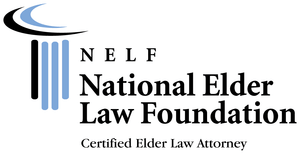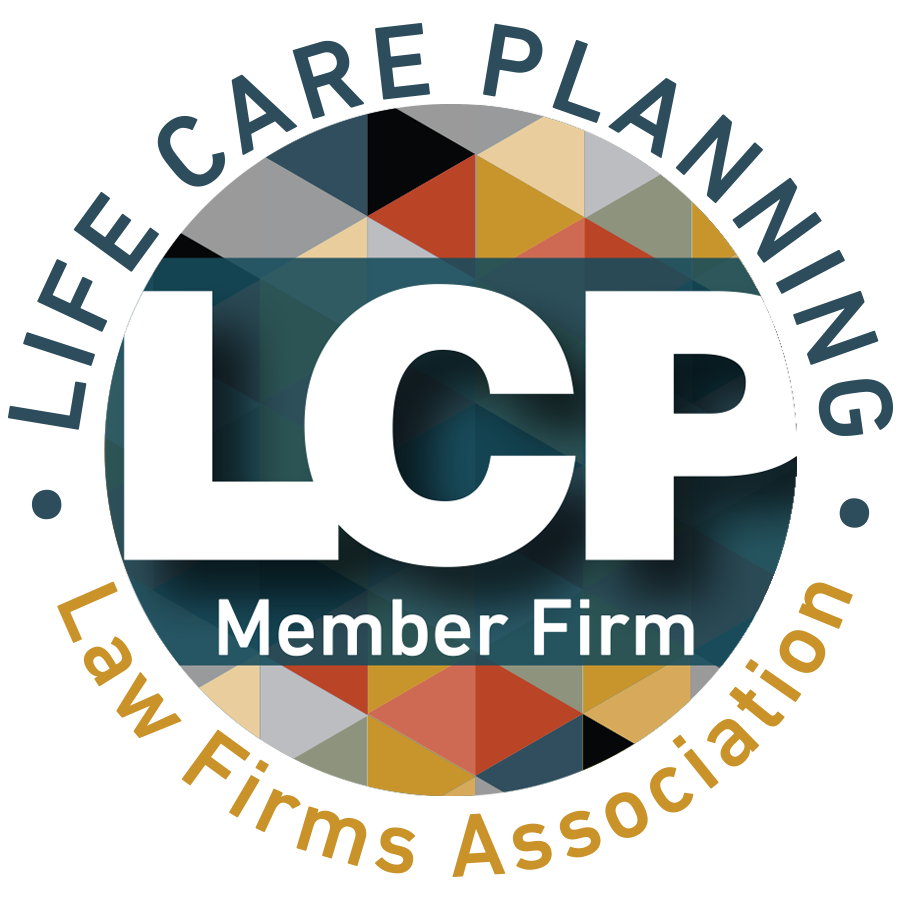Naming A Beneficiary For Your IRA
/While you should start with the general premise that all titles and beneficiary designations should be changed to your living trust, there are a few assets that you may not want in, or cannot be placed into, your living trust. Here are some you may own.
IRA, 401(k), 403(b), Pension, Profit Sharing, Keogh And Other Tax-Deferred Plans
These are plans that were created to encourage you to save for your retirement. They are called tax-deferred plans because you did not pay income taxes on this money when the contributions were made. The income taxes are deferred until you withdraw the money at a later time--ideally, at your retirement when your income (and tax bracket) is lower.
You can't leave your money in these accounts forever. At a certain point (your required beginning date), Uncle Sam says you must start taking money out. Generally, this is April 1 following the year in which you become age 70 1/2. However, if you have money in a company plan (pension, profit sharing, etc.), you continue working beyond age 70 1/2 and you own less than 5% of the company, you can delay your required beginning date on those accounts until your actual retirement date. (This exception does not apply to IRAs.)
Determining the amount you are required to take out each year (your required minimum distribution) is much easier now than it used to be. Each year you divide the year-end value of your account by a life expectancy divisor found on a chart (the Uniform Lifetime Table) provided by the IRS. The result is your required minimum distribution for that year. For example, the divisor for age 72 is 25.6. If your year-end account balance is $100,000, you divide $100,000 by 25.6. The amount you are required to withdraw for that year is $3,906.25.
You can withdraw more than the required minimum distribution amount at any time. But if you don't need all your money, or if you die before you use it all, you'd probably like to let it continue to grow tax-deferred for as long as you can, with as much as possible going to your spouse and/or children, and as little as possible going to taxes.
In the past, this has been very difficult to do because the rules governing these distributions were cumbersome, complex and confusing. But in 2001 and 2002, the IRS changed many of the rules, finalized the regulations (which had been "temporary" for several years) and actually made it easier to get the results you want.
You still cannot change the ownership of your tax-deferred plans to your living trust. You can, however, name your living trust as the beneficiary. But before you do, be sure to consider all of your options. As you will see in the next few pages, whom you name as beneficiary will have a significant impact on how long the tax-deferred growth can continue, and how much of your tax-deferred savings will go to Uncle Sam in income and estate taxes.
Who Should Be Your Beneficiary - If You Are Married
Option 1: Spouse as Beneficiary
Most married people, especially those who have been married for some time, name their spouse as beneficiary. And, in most cases, this will be your best option. The two main reasons are 1) the money will be available to provide for your surviving spouse, and 2) it gives you the spousal rollover option.
Also, if your spouse is more than ten years younger than you are, you can use a different life expectancy chart that will make your required distributions less. (This lets the tax-deferred growth continue longer on more money.)
Here's how the spousal rollover option works. If you die first, your surviving spouse can "roll over" your tax-deferred account into his/her own IRA, further delaying income taxes until your spouse must start taking required minimum distributions at his/her required beginning date. When your spouse does the rollover, he/she names a new beneficiary--preferably a much younger one, as your children and grandchildren would be.
After your spouse dies, the beneficiary's actual life expectancy will be used for the remaining required minimum distributions. Depending on the beneficiary's age at that time, that could mean decades of tax-deferred growth.
For example, let's say your grandson is 20 when he inherits a $100,000 IRA from your spouse. Assuming a 7% annual return, and that he takes out only the required minimum distribution each year, over the next 63 years (the life expectancy of a 20-year-old), this $100,000 IRA will provide your grandson with over $1.7 million in income!
What if you name your spouse as beneficiary and your spouse dies before you? Under the old rules, this was often a problem. Unless you remarried, you lost the spousal rollover option. You could name a new beneficiary, but the distributions after your death were still based on you and your deceased spouse's life expectancies. But now, under the new rules, if your spouse dies first, you can name a new beneficiary and after you die, the distributions will be based on the new beneficiary's life expectancy.
There are some possible disadvantages of naming your spouse as beneficiary that you need to consider. Keep in mind that, after you die, your spouse will have full control of this money, which may not be what you want. You may have children from a previous marriage or feel that your spouse may be too easily influenced by others after you're gone. (Your spouse doesn't have to do a rollover, you know. A total lump-sum distribution could be very tempting--even if all the income taxes would have to be paid at once!)
Naming your spouse as beneficiary could also cause you to pay too much in estate taxes. Remember, in Part Three, we explained how you can waste your estate tax exemption if you leave everything to your spouse. If your estate is large enough to pay estate taxes and most of your estate is made up of your tax-deferred savings, naming your spouse as the beneficiary could cause you to waste some or all of your exemption. (If you have other assets that can be applied to your exemption, this would not be a problem.)
If your spouse becomes incapacitated, the court could take control of this money. The money could also be lost to your spouse's creditors.
If any of these "disadvantages" fit your situation or concern you, keep reading
Option 2: Children, Other Individuals as Beneficiary
If your spouse will have plenty of assets or if you have reason to believe your spouse will die before you, then you could name your children, grandchildren or other individuals as beneficiary.
The tax benefits can be great. Since you are not leaving this money to your spouse, your estate tax exemption can be applied to it--that saves estate taxes. And if your beneficiary is much younger than you (as your children and grandchildren would be), you can get maximum "stretch out" on the tax-deferred growth.
However, as we explained in Part Two, any time you name an individual as a beneficiary, you lose control. After you die, your beneficiary can do whatever he/she wants with this money, including cashing out the entire account and destroying your carefully made plans for long-term, tax-deferred growth.
There is the risk of court interference at incapacity. Also, money that has been withdrawn would be available to the beneficiary's creditors, spouse and ex-spouse(s). And if you leave a substantial amount to a grandchild, it could be subject to the generation skipping transfer tax, which is equal to the highest estate tax rate in effect at that time and is in addition to estate and income taxes. (See Part Nine for a full explanation.)
For maximum control (especially with a minor or irresponsible individual), consider naming your living trust as beneficiary instead, as explained below.
Option 3: Living Trust as Beneficiary
Naming your living trust as beneficiary will give you maximum control over your tax-deferred money after you die. That's because the distributions will be paid not to an individual, but into your trust which contains your written instructions stating who will receive this money and when.
With an A-B living trust as beneficiary, you can provide for your surviving spouse for as long as he or she lives, yet keep control over who receives the money after your spouse dies. Plus, the proceeds can be used to satisfy your estate tax exemption and save estate taxes. (See Part Three for an explanation of estate taxes and an A-B living trust.) Your trust could also provide periodic income to your children or grandchildren, keeping the rest safe from irresponsible spending and/or creditors.
While you are living, the required minimum distributions will be paid to you over your life expectancy (determined from the Uniform Lifetime Table). After you die, the required distributions can be paid to the trust over the life expectancy of the oldest beneficiary of the trust.
Just as you can do now, the trustee of your trust will be able to withdraw more money from the account if needed to follow the instructions in your trust, but the rest can stay in the account and continue to grow tax-deferred. You can, of course, name anyone you wish as trustee. But if the trust will exist for a long period of time (for example, to provide for your grandchildren), you may want to consider a corporate trustee. (See Part Four for more on corporate trustees.)
There are some possible disadvantages to consider with a trust, as well. For example, you will not be able to provide for your spouse and stretch out the tax-deferred growth beyond your spouse's actual life expectancy. Remember, after you die the distributions will be paid over the life expectancy of the oldest beneficiary of the trust. If your spouse is a beneficiary of your trust, he or she will probably be the oldest beneficiary. If your spouse is not a beneficiary of the trust, the oldest beneficiary may be one of your children. That would let you extend the tax deferral over your child's life expectancy. But then the money would not be available to your spouse.
Also, many trusts pay income taxes at a higher rate than most individuals, but only on income that stays in the trust. (With a revocable living trust, this would apply only after you die.) Distributions from your tax-deferred account that are paid to the trust are subject to income tax, and if they were to stay in the trust, the higher tax rates would apply. But usually this is not the case because the trustee distributes the income to the beneficiaries of the trust, who then pay the income tax at their own (usually lower) rates. (See Part Eight for more information on trusts and income taxes.)
In order for a trust to work this way as beneficiary of a tax-deferred account, it must meet certain requirements:
- It must be valid under state law.
- It must be irrevocable or become irrevocable at your death (which a living trust does).
- The beneficiaries must be individuals and identifiable from the trust document.
- A copy of the trust document and any subsequent revisions must be provided to the Plan Administrator or IRA trustee, custodian or issuer.
Depending on the kind of trust you would like to use, there may be additional regulations governing them. Check with your attorney.
Option 4: Charity/Foundation as Beneficiary
If you are planning to leave an asset to charity anyway after you die, a tax-deferred account can be an excellent asset to use. That's because when you name a charity as the beneficiary, there will be no income or estate taxes on this money after you die.
If you name a charitable remainder trust (explained in Part Nine) as beneficiary, your spouse, children or others can receive an income for a set number of years or for as long as they live--and you will still save income and estate taxes. You can also set up your own charitable foundation and have the foundation pay your kids a salary to run it. (See Part Nine.)
The only downside of naming a charity as beneficiary is that it has no life expectancy. Under the old rules, if you named a charity as beneficiary, you had to use just your life expectancy when determining distributions during your lifetime. This made the distributions larger than they would have been with another beneficiary. But now, even with a charity as your beneficiary, you use the Uniform Lifetime Table to determine your required minimum distributions, so this is not the problem it used to be.
However, you still need to be aware of a charity's "zero" life expectancy, as you will see next.
Option 5: Some or All of the Above as Beneficiary
You don't have to choose just one of these options. You can split a large IRA into several smaller ones and name a different beneficiary for each one. If your money is in a company plan, you can roll it into an IRA and then split it.
You could name several beneficiaries for one IRA, but then you must use the life expectancy of the oldest beneficiary for the entire IRA, just as when you use a trust as beneficiary. This is especially important if a charity is involved. Remember, it has a life expectancy of zero, so the IRS would consider it the oldest beneficiary. Depending on when you die, this could cause the entire IRA to be paid out in just five years.
With separate IRAs--one for each beneficiary--you can use each one's life expectancy. This will give you the maximum stretch out over all their ages. It will also be more fair to your beneficiaries, especially if there is a wide difference in their ages, or if you want to include a charity.
When should you divide a larger IRA? That will depend on your planning decisions. Doing it now, while you are living, is the cleanest approach. If you die first, your surviving spouse can also split your IRA when he/she does a rollover and names new beneficiaries. And now, under the new rules and under certain circumstances, your IRA can be divided into separate accounts in the year after you die.
Setting up separate IRAs now will make it a little more complicated for you when calculating your required minimum distributions each year, because one will have to be calculated for each IRA. But you can take the total of your distributions from any IRA you wish. And it can be well worth the trouble. Splitting your IRA like this can also help you save estate taxes.
Note: Any time you name someone other than your spouse as the beneficiary, you need expert advice. You'll need to find an attorney who is experienced in this area, especially if you have large amounts in these plans. Also, your spouse may need to sign a consent form. Even in noncommunity property states, spouses now have rights to retirement plan and other benefits.
Who Should Be Your Beneficiary - If You Are Not Married
If you are not married, your decision will be less complicated. You can name any individual, a trust, or a charity as the beneficiary.
If you want an individual to receive this money after you die, consider using a trust to keep more control.
Before you make a decision, consider all of your options carefully. And make sure your attorney has experience in this area, especially if you have a sizeable amount in your tax-deferred plans.
If You Die Without A Beneficiary
What happens under the new rules if you die without a beneficiary? That depends upon when you die. If you die before your required beginning date, your account must be paid out within five years. If you die after your required beginning date, distributions will be paid over the remaining years of your "fixed life expectancy." This is determined from an IRS table based on your age in the year you die.
How to Change the Beneficiary Designation for Your Tax-Deferred Plans
Under the new rules, you can change your beneficiary at any time while you are living and the distributions after you die will be paid over that beneficiary's life expectancy.
In fact, now your final beneficiaries do not have to be determined until September 30 of the year after you die, which allows for some neat "clean-up" planning to be done after you're gone. For example, your spouse could "disclaim" some benefits so a grandchild could inherit. Of course, no new beneficiaries can be added after you die. So, you must have the right beneficiaries named on your account before then.
To change the beneficiary of employer-sponsored plans (such as a 401(k), pension, or profit sharing plan), contact your employee benefits or personnel department for the proper form. To change the beneficiary of your IRA or Keogh, you will need to contact the institution where your account is located.
Some plans have restrictions on what you can do on the beneficiary designations. Be sure to read the document carefully. If the plan will not let you do what you want to do, consider rolling your money into an IRA as soon as you can. If your money is already in an IRA and the institution will not agree to what you want, consider moving your IRA to another institution.
Roth IRA
If you qualify, you may want to consider converting some or all of your tax-deferred money to a new Roth IRA. You can only convert from a traditional IRA, so if your money is in a different tax-deferred plan, like a pension or profit sharing plan, you must first roll your money into a traditional IRA and then convert it to a Roth IRA. You will have to pay ordinary income taxes on the amount when you convert.
Why go to all this trouble? Because it can be well worth it. For example:
- Unlike a traditional IRA that requires you to start taking your money out at age 70 1/2, with a Roth IRA there are no required minimum distributions during your lifetime. So, you can leave your money there for as long as you wish.
- Unlike a traditional IRA, you can continue to make contributions to a Roth IRA after you have reached age 70 1/2.
- As a general rule, after five years or age 59 1/2 (whichever is later), all distributions to you and your beneficiaries will be tax-free.
- You can stretch out a Roth IRA just like a traditional IRA. After you die, distributions can be paid over the actual life expectancy of your beneficiary. Your spouse can even do a spousal rollover and name a new beneficiary.
Your tax advisor can help you determine if converting to a Roth IRA would be a good move for you.
Tax-Deferred Annuities
Tax-deferred annuities sold by insurance companies are not IRAs or qualified plans. As a result, they are not governed by the same IRS rules as the plans listed above and the preceding discussion does not apply to them.
Before you name a beneficiary, read your contract carefully. There may be some restrictions or income tax issues you need to be aware of when making this decision.
For example, if you are married, naming your spouse as beneficiary may allow the tax-deferred payments to continue over your spouse's lifetime. After you die; while naming someone other than your spouse (like your living trust) could cause the balance to be paid out all at once after you die. (One solution may be to name your spouse as first beneficiary and your living trust as second beneficiary.)
Incentive Stock Options
Stock options are often used as a form of compensation for valued employees, who are given the right to buy company stock at some point in the future at a predetermined (and usually very favorable) price.
Usually, you have to wait until a certain amount of time has passed before you can "exercise" the option (buy the stock). You do not pay income taxes until the stock is later "disposed of" which, according to the IRS, is a "sale, exchange, gift or transfer of legal title."
The laws are not clear about whether putting stock options into your living trust would cause you to violate the "waiting time" or if this would be considered a "transfer of legal title," which then would cause you to pay income taxes at that time.
However, we are aware of at least one company that has written to the IRS, asking for an opinion on whether transferring incentive stock options to a revocable living trust would be considered a "disposition." The response from the IRS (called a "Private Letter Ruling") states that it would not be.
You or your attorney will probably want to read the plan document to see if there are any restrictions on transferring these options to your living trust. You may also want to write the plan administrator for approval. Depending on how long you have before an option expires, you may want to just wait until after you exercise the option and then transfer the stock to your living trust.
Section 1244 Stock
Business owners know that many new businesses fail, so they often incorporate under Section 1244 of the Internal Revenue Code. If the business is later sold or liquidated at a loss, this allows the stockholders (the owners) to take the loss on the stock as an ordinary loss instead of a capital loss.
Normally, when you sell stock (and other investments) and have a loss, it is considered a capital loss and can only be used to offset capital gains (your profits when investments are sold). If your capital losses exceed your capital gains for that year, under current tax law you are only allowed to deduct $3,000 ($1,500 if married filing separately) of the excess loss per year from your ordinary income (wages, tips, etc. as defined by the IRS on Form 1040).
But with 1244 stock, the stockholders can deduct the loss from ordinary income instead of from just capital gains. Individuals can currently deduct up to $50,000 in these losses per year; married couples filing jointly can deduct up to $100,000 in losses per year. Any excess loss can be rolled forward to subsequent tax years.
Under current tax law, transferring Section 1244 stock to a living trust would cause you to lose this tax benefit. Whether or not you will want to put this stock in your living trust will probably depend on how long you have been in business and how profitable the business is.
If you think the business may have to be sold or liquidated at a loss, you probably do not want to put Section 1244 stock in your living trust. However, if the corporation is successful and there is little chance of a loss, you may want to go ahead and do so. We suggest you discuss this with your attorney and accountant before you decide.
Professional Corporations
State laws require shareholders of professional corporations (like doctors and dentists) to be licensed members of their professions. Since a living trust is revocable and you keep control of the assets you put in it, some attorneys feel that transferring a professional corporation to a living trust would not be a problem. But because the laws do not specifically mention living trusts, many attorneys suggest that you leave these out of your trust for now, at least until the laws are changed to include living trusts.





